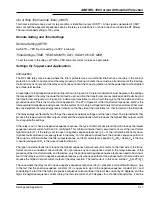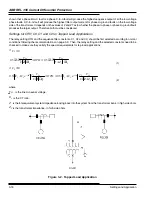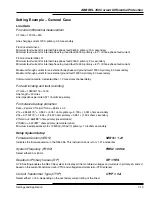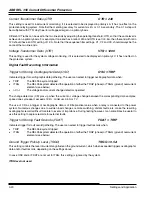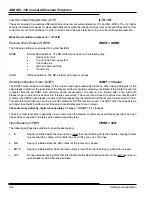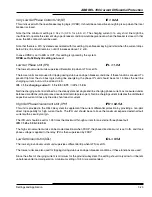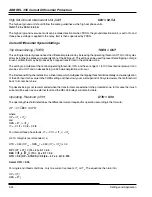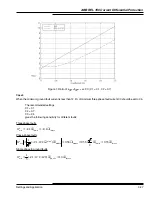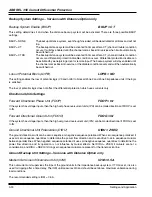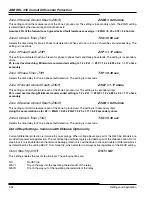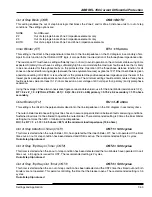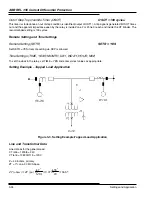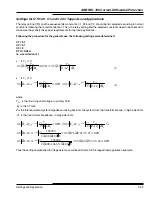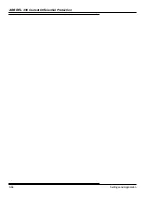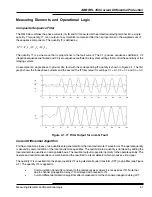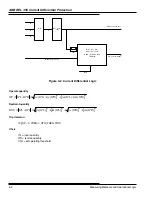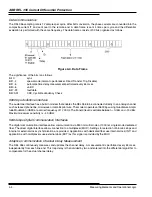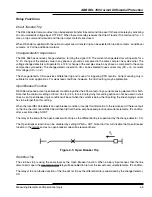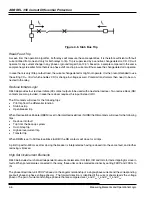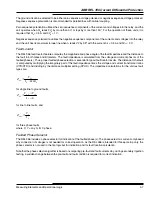
ABB REL 356 Current Differential Protection
3-29
Settings and Application
For systems using external multiplexers (T1 or E1 type) the setting should be XCLK = EXT. Note that the data clock is
extracted from the received data stream so that no connection to any “clock” output on the multiplexer is needed.
For systems using dedicated fiber (850 nm or 1300 nm) the setting should be XCLK = INT.
Dedicated fiber
Þ
XCLK = INT.
Loopback (LPBK)
LPBK = NO
This setting should be LPBK = NO during normal operation.
The LPBK setting is only set to YES for testing when the relay is connected in loopback mode, i.e. the communication
wires are cross connected so that the relay communicates with itself. Loopback mode disables the automatic channel
delay measurement and unit ID check as these can no be performed during loopback condition.
LPBK = YES is only used during testing. Set LPBK = NO for normal service.
Transmitter Level (XMTR) – Audiotone version only
This setting defines the output power from the unit’s transmitter in –dBm. It should be set in accordance with specifica-
tions for the channel used. For metallic pilot wire applications, the maximum setting is recommended, i.e. –1 dBm.
Receiver Level Signal Detector (RLSD) – Audiotone version only
This setting defines the minimum threshold for declaring channel trouble (CHTB) in –dBm.
Fault Locator and Distance System Common Settings
Ohms Per Unit Distance (XPUD)
XPUD = 0.971
This setting is used by the fault locator algorithm to estimate a calculated distance to the fault. The units of XPUD will
be in primary ohms per mile or kilometer, depending on the setting of DTYP.
Line impedance per mile 0.971 ohms/mile, primary
Distance Unit Type (DTYP)
DTYP = MI
Either miles (MI) or kilometers (km) can be selected. This setting should match the units used in XPUD.
Positive Sequence Impedance Angle (PANG)
PANG = 79
This setting relates directly to the positive sequence angle of the line. It defines the Zone 2 and Zone 3 phase impedance
unit maximum torque angle in degrees. This setting is also used for defining the slope of the blinders for OST and OSB
an for the fault locator algorithm.
Z1L = 4.855@79
°
Þ
PANG = 79
Zero Sequence Impedance Angle (GANG)
GANG = 79
This setting defines the impedance angle of the zero sequence (ZI0) impedance of the line. Zone 2 and Zone 3 ground
impedance units use this angle for their operation.
Z0L = 9.710@79
°
Þ
GANG = 79
Zero Sequence to Positive Sequence Impedance Ratio (ZR)
ZR = 2.0
This setting is used for all ground fault measurements. It reflects the magnitude ratio of the zero sequence impedance
to the positive sequence impedance of the line and is determined as ZR = ZL0/ZL1.
ZR = Z0L/Z1L = 9.710/4.855 = 2
Summary of Contents for REL 356
Page 23: ...ABB REL 356 Current Differential Protection 1 10 Product Overview and Specifications ...
Page 83: ...ABB REL 356 Current Differential Protection 3 36 Settings and Application ...
Page 127: ...ABB REL 356 Current Differential Protection 5 28 Testing ...
Page 186: ...LINE SECTIONALIZING USING A PLC AND ABB PROTECTIVE RELAY Page 49 of 53 ...
Page 187: ...LINE SECTIONALIZING USING A PLC AND ABB PROTECTIVE RELAY Page 50 of 53 ...
Page 188: ...LINE SECTIONALIZING USING A PLC AND ABB PROTECTIVE RELAY Page 51 of 53 ...
Page 189: ...LINE SECTIONALIZING USING A PLC AND ABB PROTECTIVE RELAY Page 52 of 53 ...



